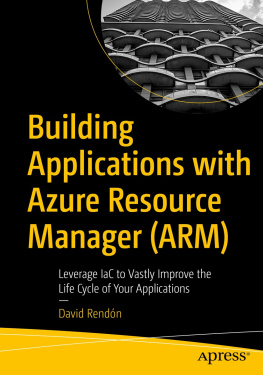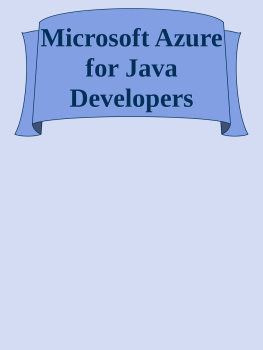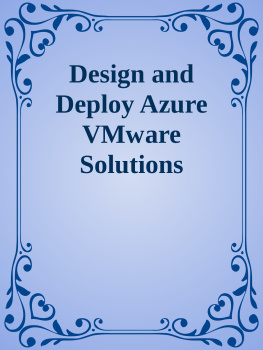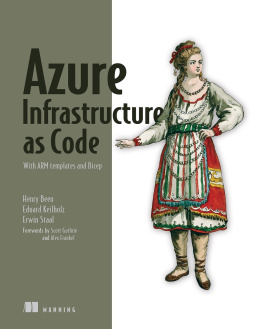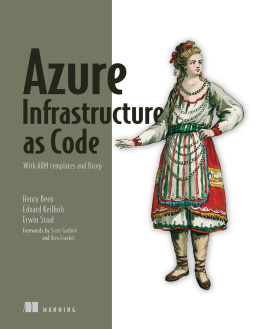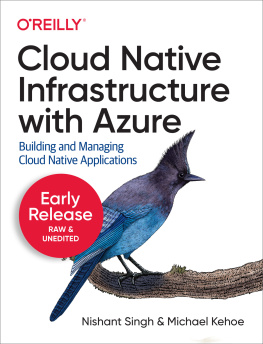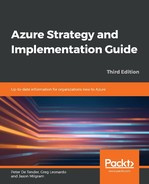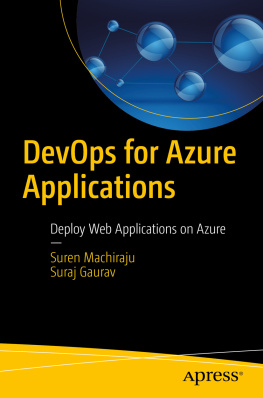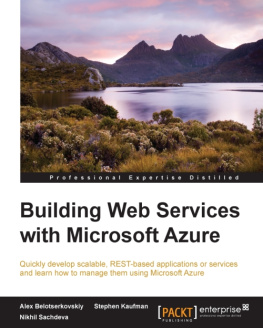David Rendón - Building Applications with Azure Resource Manager (ARM): Leverage IaC to Vastly Improve the Life Cycle of Your Applications
Here you can read online David Rendón - Building Applications with Azure Resource Manager (ARM): Leverage IaC to Vastly Improve the Life Cycle of Your Applications full text of the book (entire story) in english for free. Download pdf and epub, get meaning, cover and reviews about this ebook. year: 2021, publisher: Apress, genre: Computer. Description of the work, (preface) as well as reviews are available. Best literature library LitArk.com created for fans of good reading and offers a wide selection of genres:
Romance novel
Science fiction
Adventure
Detective
Science
History
Home and family
Prose
Art
Politics
Computer
Non-fiction
Religion
Business
Children
Humor
Choose a favorite category and find really read worthwhile books. Enjoy immersion in the world of imagination, feel the emotions of the characters or learn something new for yourself, make an fascinating discovery.
- Book:Building Applications with Azure Resource Manager (ARM): Leverage IaC to Vastly Improve the Life Cycle of Your Applications
- Author:
- Publisher:Apress
- Genre:
- Year:2021
- Rating:5 / 5
- Favourites:Add to favourites
- Your mark:
Building Applications with Azure Resource Manager (ARM): Leverage IaC to Vastly Improve the Life Cycle of Your Applications: summary, description and annotation
We offer to read an annotation, description, summary or preface (depends on what the author of the book "Building Applications with Azure Resource Manager (ARM): Leverage IaC to Vastly Improve the Life Cycle of Your Applications" wrote himself). If you haven't found the necessary information about the book — write in the comments, we will try to find it.
As organizations consider moving partially or fully to the cloud, infrastructure as code (IaC) has become a key component to improving time to market for their applications. However, it is critical that enterprise infrastructure professionals use the right resources and strategies to build the infrastructure required to run applications in the cloud. Azure cloud-native components and capabilities automate the build and deployment process, offering a myriad of compelling reasons to leverage IaC to build your applications in Azure.
Starting with the evolution of the software-defined approach and building on the basic concepts of infrastructure as code, this book provides you with comprehensive guidance to learn Azure Resource Manager from the ground up. You will learn the best practices for deploying and maintaining application infrastructure, such as template authoring tooling enhancements, Azure DevOps integrations, and updates to the deployment platform.
After reading this book, you will understand the breadth and use cases of ARM capabilities and tooling within Microsoft Azure. You will be able to build, test, debug, and deploy your ARM templates and know how to use infrastructure as code to better manage the life cycle of your applications in Azure.
What You Will Learn
- Introduces the concepts of infrastructure as code and how to leverage it using Azure Resource Manager
- Teaches how to enable and deploy Azure Resource Manager templates
- Covers the basic core elements of an ARM template to start authoring your templates and building your applications in the cloud
- Dives into core components such as parameters, variables, functions, dependencies, deployment modes, loops, conditions), enabling nested templates
- Reveals the built-in services and features in Azure, allowing the debugging process and validation process of the ARM templates
- Discusses Bicep the language for ARM templates and the DevOps integration to deploy ARM templates
Who This Book Is For
People who build, install, repair, or maintain the hardware and software associated with computer systems on-premises and who want to learn about the deployment and provisioning process of applications in the Microsoft Cloud using an infrastructure as code approach through Azure Resource Manager. Readers should have an Azure account and be familiar with the main Azure services (storage, compute, networking, management). Basic knowledge of PowerShell is also useful.
David Rendón: author's other books
Who wrote Building Applications with Azure Resource Manager (ARM): Leverage IaC to Vastly Improve the Life Cycle of Your Applications? Find out the surname, the name of the author of the book and a list of all author's works by series.

